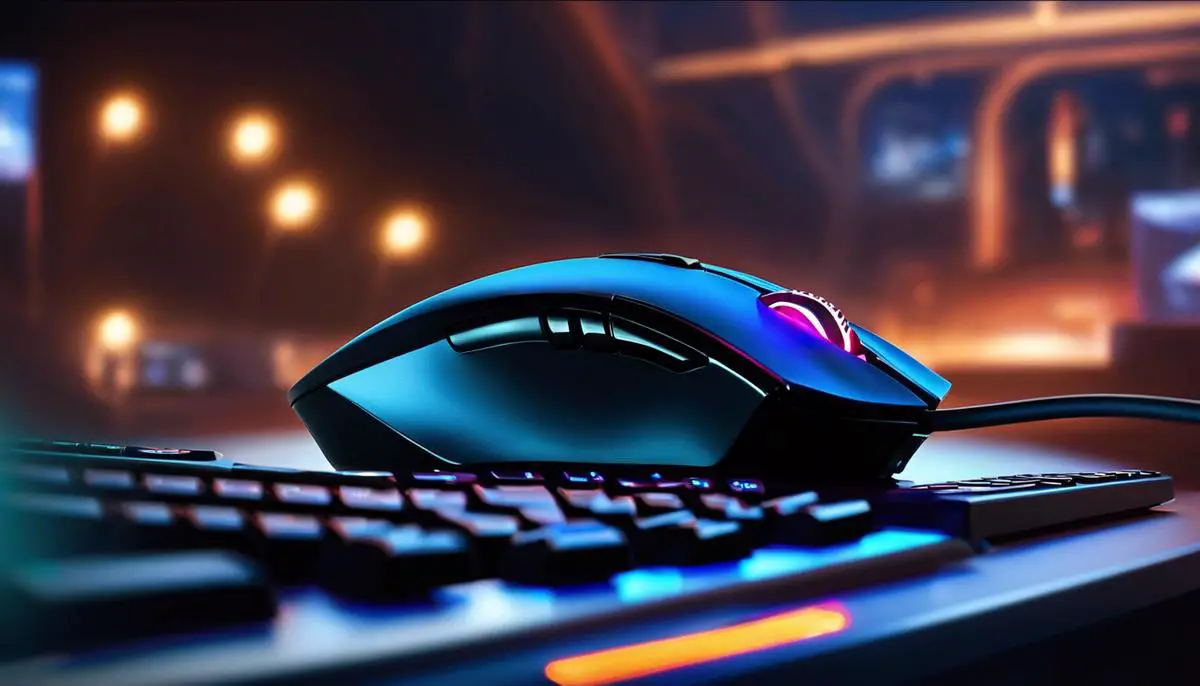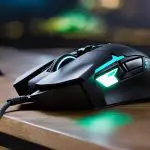Mastering the art of precision in a competitive shooter like VALORANT hinges on your ability to harness the subtle nuances of mouse sensitivity. As an integral component of your gaming setup, understanding DPI (Dots Per Inch) and in-game sensitivity is essential for achieving the pinpoint accuracy required to excel. The interplay between these settings determines not just the responsiveness of your mouse movements, but also impacts your overall aiming mechanics and performance. This quest for control and precision is not just about numbers; it’s about discovering a feel and response that empowers your playstyle. By delving into the sensitivity settings in VALORANT, you are taking the first step towards tailoring your gameplay experience to match your individual skills and tendencies.
Understanding DPI and Sensitivity
Mastering Precision: The Critical Role of DPI and Sensitivity Settings in VALORANT
When it comes to competitive gaming, particularly with a tactical shooter like VALORANT, precision can be the dividing factor between victory and defeat. Understanding DPI (Dots Per Inch) and in-game sensitivity is paramount for players serious about optimizing their gameplay. Let’s dive into the mechanics and significance of these settings.
DPI Explained:
DPI refers to a mouse’s sensitivity. In layman’s terms, it’s the number of dots (or pixels) that your mouse cursor will move on screen for every inch the physical mouse is moved. A higher DPI setting results in a cursor that covers more distance on the screen with less physical movement. Gaming mice come with a wide range of DPI settings, often ranging from 400 to over 10,000. But here’s the kicker: higher doesn’t always mean better.
In VALORANT, precision shots are crucial. A lower DPI can afford you more control, allowing you to make micro-adjustments to your aim. For this reason, many top players stick to the 400-800 DPI range. Opting for a DPI setting within this spectrum can drastically improve accuracy, but it’s only half the equation.
In-Game Sensitivity:
Now that DPI’s understood, consider in-game sensitivity – this setting dictates how much in-game movement is generated per inch of mouse movement. Whereas DPI is a hardware setting, in-game sensitivity is a software setting, which means it allows for finer tuning within VALORANT itself.
The sweet spot for in-game sensitivity varies between players due to playing style and physical space limitations for mouse movement. A common practice is to adjust your sensitivity so that a full swipe across your mouse pad equates to a 180-degree turn in-game. This ensures you’re able to swiftly react to any situation without the risk of overshooting your target.
DPI and Sensitivity Synergy:
For unparalleled aim precision in VALORANT, synchronize DPI and in-game sensitivity settings. It’s a balance that hinges on personal preference, mouse pad size, and desk space. A lower in-game sensitivity paired with a controlled DPI can hone your aim, but remember that these settings should feel natural. You want to effortlessly clear corners, track enemy movement, and snap to headshots with consistency.
Practice Makes Perfect:
After dialing in your settings, practice is non-negotiable. Your muscle memory will need to adjust to your new DPI and sensitivity settings, which takes time. Use VALORANT’s practice range to refine your aim. Pay attention to how often you over or under aim, and make incremental changes as needed.
In summary, DPI and in-game sensitivity are two sides of the same coin that can significantly impact your aim and performance in VALORANT. Finding the ideal balance will make your movements more natural, accurate, and, ultimately, lethal. Remember: dexterity in settings equates to agility in play. Now, get out there and optimize your setup for competitive superiority!

Finding Your Comfort Zone
Tailoring Mouse Sensitivity to Maximize Your VALORANT Playstyle
For competitive players looking to enhance their performance in VALORANT, dialing in the perfect mouse sensitivity is a crucial step. Beyond the essential knowledge of DPI and the importance of precision, in-game sensitivity, and practice, there are nuanced methods to refine one’s settings to fit their playstyle precisely. Here’s how to fine-tune your setup for peak personal performance.
Step 1: Consider Your Playstyle
First, analyze your playstyle. Are you a quick, flick-shot player or a methodical, slow-aiming sniper? This personal playstyle greatly influences your ideal sensitivity.
Step 2: Record Your Current Performance
Document your current aim proficiency. Hit-rate, reaction time, and comfort level with your current settings are benchmarks to consider. Use these as a baseline for comparison as you adjust your settings.
Step 3: Experiment with Sensitivity Settings
Start by making small adjustments to your sensitivity. Incremental changes are key – drastic jumps can throw off your aim entirely. Adjust until your movements on-screen align smoothly with your hand motions.
Step 4: Use Aim Training Software
Leverage aim trainers specifically designed for VALORANT. These programs offer detailed statistics on performance and can isolate specific aiming skills for improvement.
Step 5: Assess Your Effective DPI (eDPI)
Effective DPI, calculated by multiplying your mouse DPI with in-game sensitivity, offers a combined sensitivity metric. Compare your eDPI with that of professional players who have a similar playstyle to ensure you’re within a competitive range.
Step 6: Study Pro Player Settings
While it’s not advisable to directly copy professional settings, studying pros with comparable playstyles can offer insight into effective sensitivity ranges. Observe their precision and speed for context.
Step 7: Refine Crosshair Placement
Proper sensitivity also affects crosshair placement. Ensure your settings don’t hinder your ability to maintain crosshair at head-level and make micro-adjustments for headshots.
Step 8: Test Under Pressure
Play several competitive matches with each sensitivity adjustment. Take note of performance in high-stress situations. Your settings must hold up when it counts.
Step 9: Evaluate Arm vs. Wrist Movements
Understand your aiming style: arm-aimers require a larger mousepad and lower sensitivity, while wrist-aimers might prefer higher sensitivity. The goal is seamless, pain-free movement over prolonged play.
Step 10: Prioritize Consistency
Once you find a sensitivity that feels right, stick with it. Frequent changes disrupt muscle memory and can hinder proficiency development.
Step 11: Assess Adaptability
Ensure your chosen sensitivity translates well across various aiming scenarios in VALORANT – from close-quarters duels to long-range engagements.
Step 12: Adjust for Map Specifics
Certain maps may necessitate slight sensitivity tweaks due to layout and engagement ranges. Maintain a core sensitivity but be flexible for map-specific optimization.
Step 13: Continual Reevaluation
As your skills sharpen, reevaluate your sensitivity. Incremental improvements in your aim may justify fine-tuning to cater to an evolving playstyle.
Step 14: Comfort and Health
Your physical comfort is paramount. If any sensitivity level causes strain or discomfort, it’s not sustainable. Prioritize ergonomics and health in your setup.
Optimizing mouse sensitivity for VALORANT is a personal journey. With a calculated approach and attention to detail, any player can engineer their settings to complement their individual playstyle, leading to improved control, accuracy, and overall competitive advantage in the field. Pair your adjusted sensitivity with your sharpened skills, and you’ll surely climb the ranks of this tactical shooter.

Adjusting to Different Scenarios
Mastering Mouse Sensitivity in Gaming: When to Tweak for Tactical Advantage
In the realm of gaming, especially in fast-paced titles like first-person shooters, tactical adjustments can mean the difference between triumph and defeat. Knowing when and why to adjust mouse sensitivity is one such tactical edge. Enter the nuanced world of in-game scenarios, where even subtle enhancements to mouse sensitivity can alter outcomes.
Sniping: Low Sensitivity for Pinpoint Accuracy
In moments requiring the utmost precision – for instance, when taking the role of a sniper – your DPI and in-game sensitivity should harmonize to allow for meticulous aim. Lowering sensitivity ensures the smallest hand movements translate to minor cursor adjustments, crucial for aligning those critical headshots.
Frenetic Close Quarters Combat: Upping the Ante
When thrust into close-quarters combat, higher sensitivity might provide the quick response needed to outmaneuver opponents. A flick of the wrist should suffice to rotate the field of view appropriately, granting the flexibility to confront multiple adversaries swiftly.
High-pressure Situations: Adapt to Survive
An intense in-game event, like the final circle in a battle royale, demands adaptability. Here, a sensitivity level that facilitates both rapid turns and precision shots is essential. A medium-high setting often serves as a reasonable compromise.
Surge in In-game Actions: Dynamic Sensitivity Shift
Some games allow for dynamic sensitivity adjustments based on the action. Aiming down sights (ADS) in many shooters automatically lowers sensitivity for enhanced accuracy. Knowing when the game adjusts for you, and how to complement this with manual tweaks, empowers players to maximize in-game effectiveness.
Role Shifting: Sensitivity Variation is Key
Taking on different roles in a team – such as switching from an entry fragger to support – may necessitate sensitivity changes to match the varied playstyle requirements of each position.
Peripheral Suitability: Understanding the Hardware
Not all mice are created equal, and neither are the surfaces they glide upon. An accessory change – such as from a control-focused to a speed-oriented mouse pad – might warrant sensitivity adjustments to maintain a consistent feel.
Game Updates and Patches: Stay Vigilant
Never underestimate the impact an update can have on game mechanics. When developers tweak the physics or aiming system, revisiting mouse sensitivity settings ensures you’re not left behind with a suboptimal setup.
Tailoring mouse sensitivity to the in-game environment, personal playstyle, and evolving scenarios is a meticulous process but critical for gamers who obsess over competitive edges. Skip the one-size-fits-all approach, embrace customization, and transform those micro-adjustments into macro triumphs. After all, in the theatre of digital warfare, it’s the small details that often wield the most significant impact.

Embarking on the journey to refine your mouse sensitivity settings in VALORANT is a testament to your commitment to personal growth within the game. By meticulously testing and adjusting to find your comfort zone, you’re positioning yourself to respond with masterful control in the heat of battle. Remember, the perfect setting is a reflection of your unique playstyle, enabling you to adapt seamlessly to various scenarios. As you continue to evolve as a player, your sensitivity settings may also shift. Embrace this evolution, knowing that with each adjustment, you’re edging closer to the impeccable aim that defines the elite echelon of VALORANT marksmanship.
- Guide to Life Is Strange: True Colors Ch. 1 Choices - April 4, 2024
- Catching Spiritomb in Pokemon BDSP - April 4, 2024
- Mastering Life Is Strange: Key Choices in Chapter 1 - April 4, 2024
Views: 5








